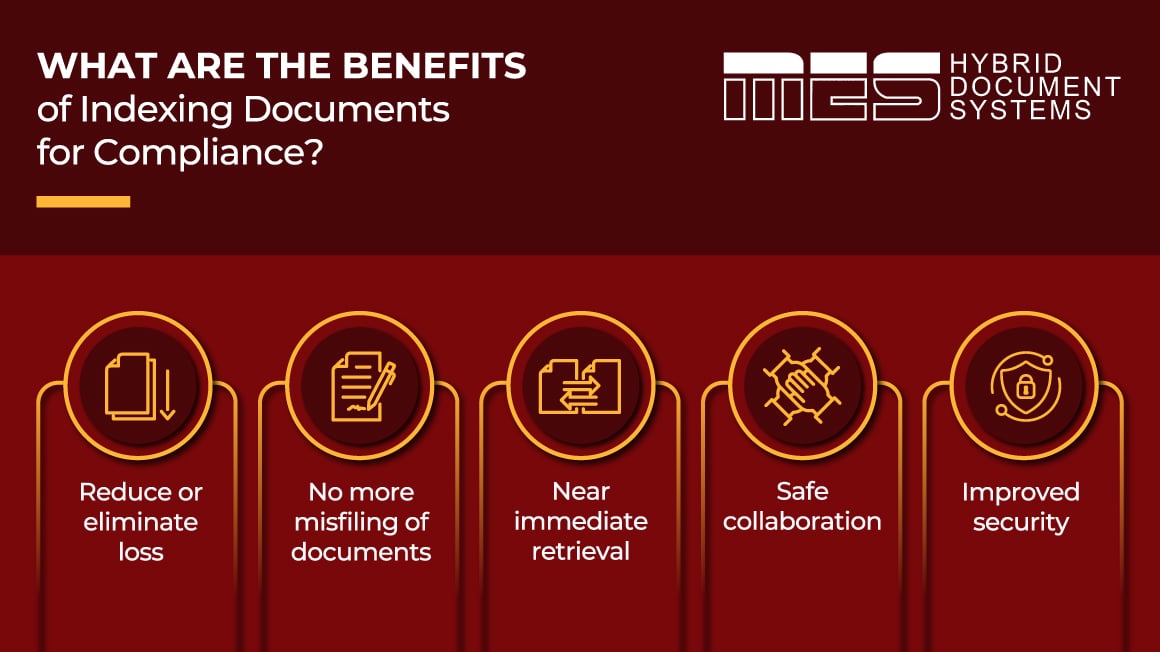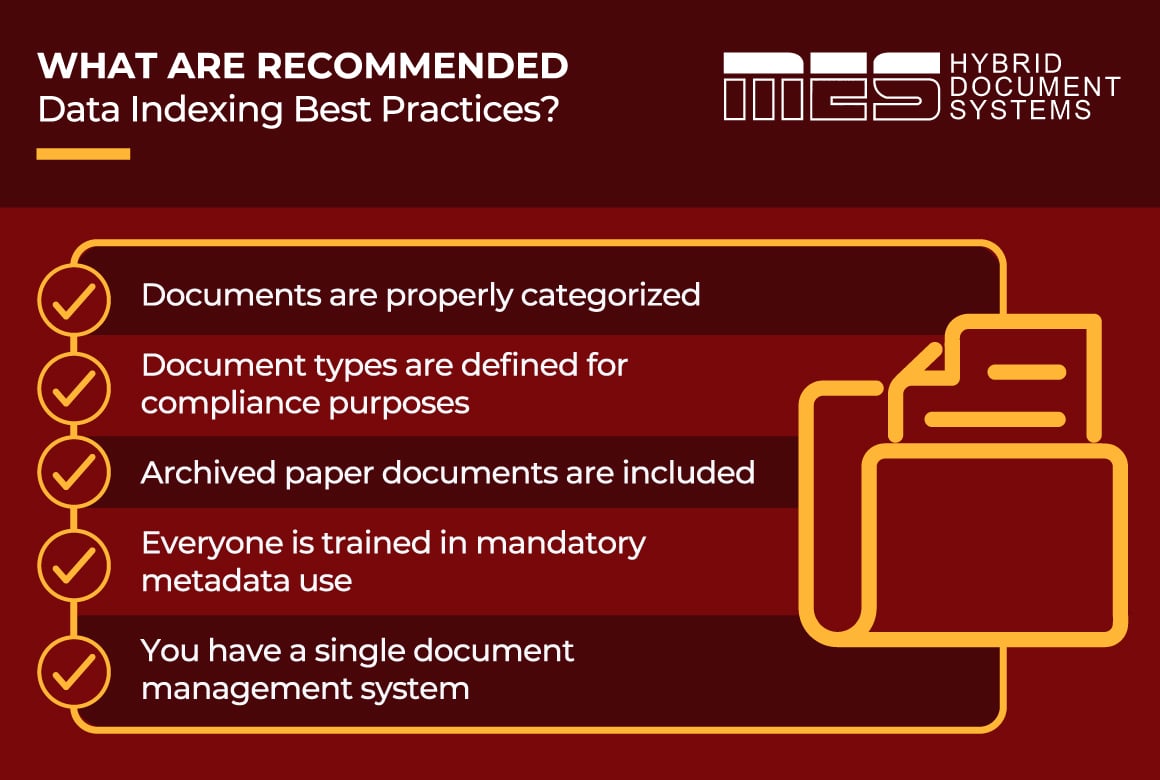Meeting regulatory document management rules can be challenging, but using a document indexing system can help. Document indexing methods make it easier to find data, ensure accurate documentation, and access important information promptly.
What is Document Indexing?
Document indexing uses special file naming rules to ‘tag’ files with suitable attributes or labels, making searching easier. This allows your team to search using logical criteria like client/employee names or numbers, dates, phone numbers, and keywords. Using relevant tags for all files in your system is important.
How Does Document Indexing Help with Compliance?
Maintaining paper documents or storing documents across different systems makes keeping files secure and sticking to retention schedules difficult. Data indexing and a digital document system help keep files and data safe, retrieve documents quickly, and automate retention schedules.
What are Common Challenges of Compliance Indexing Overcomes?
Document indexing helps overcome common compliance issues, including:
- Not keeping the right retention schedules for different types of records
- Using formats that can be rewritten or erased, risking data alteration
- Using various systems for storing documents that still need to be kept, including archived documents
- Missing proper audit trails for proving compliance in audits
- Not ensuring strong access control, tracking, and ownership of documents
- Not using safe and compliant tools for sharing documents

What are the Benefits of Indexing Documents for Compliance?
There are several benefits of indexing data and documents over manual indexing, including:
Reduce or eliminate loss: When documents are index files, they are stored electronically, reducing or even eliminating loss. Even if someone doesn’t stick to indexing data based on your protocols, the search capabilities are so advanced you can use various tags and keywords to locate the document quickly based on date, name, ID numbers, etc. Indexing data digitally ensures that paper files never circulate in the office and are always stored securely in your repository.
No more misfiling of documents: Misfiles are like losses because it's nearly impossible to find files. This puts you at risk of compliance issues if you can't provide the information during an audit. When you index your data and documents, this won’t happen.
Near immediate retrieval: You can search digital documents based on your criteria using your document indexing software almost immediately.
Safe collaboration: Compliance relies on safe collaboration, ensuring only authorized employees can access data. A permission-based indexing system requires users to enter usernames and passwords that quickly determine what documents they can access and how they can interact with the documents concerning their roles.
Improved security: Unlike paper documents that people can access far too easily via filing cabinets, document indexing software creates a system that is only accessible using usernames and passwords. You can set a wide range of user access controls dictating the level of access, such as view-only, edit, approval, etc.
These benefits help you follow rules from government departments, regulatory bodies, and standards organizations. You can use specific naming criteria based on the regulatory boards affecting your industry to avoid fines and penalties.
What is the Best Way to Index Documents?
Incorporating metadata into document creation ensures you can’t lose documents in your system. However, you need a document indexing system with effective document management software to improve data access efficiency. Effective data indexing systems with experienced document indexing services will ensure your documents are organized in logical categories using effective common keywords.
A document indexing service will discuss the features and rules that make sense for creating your metadata, helping you improve compliance.

What are Recommended Data Indexing Best Practices?
Your document indexing protocols must ensure that:
Documents are properly categorized: A document indexing method ensures you define data elements to categorize documents based on enterprise-wide protocols. These attributes and descriptors label digital files with appropriate terms and keywords for quick searching and retrieval from a secure, central location.
Document types are defined for compliance purposes: A document type refers to categories such as invoices, contracts, specification sheets, HR training certificates of completion, benefits forms, resumes, etc. You can use this first classification level more quickly to make searches easier while applying retention rules to each document type.
Archived paper documents are included: Archived paper documents must be scanned and added to your system to help ensure compliance. Even if you still need to retain paper records, you can apply retention rules to the document type and manage the corresponding paper document more easily, thanks to automated notifications.
Everyone is trained in mandatory metadata use: All employees must use the same metadata when creating new documents. Without proper indexing tags, the system will fail, and documents can be lost. Creating a metadata instruction sheet and training new team members on metadata protocols ensures everyone follows your indexing rules.
You have a single document management system: Document indexing creates a single organized document storage system. However, you need the right software to create a compatible indexing and storage system to facilitate a compliant records management method and process.
What to Look for in Document Indexing and Management Software
To help you adhere to regulatory compliance, you need document indexing and management software that uses strict, consistent naming conventions based on document type. This calls for a user-friendly interface that allows you to set standards based on regulations while keeping your records secure.
AI capabilities can make your search functions more robust and make scanning and naming documents more intuitive to enable automated indexing. You also want your indexing system to integrate seamlessly with your existing tech stack to make it easier for your team. The right system allows you to quickly track and retrieve each document based on regulations and company access policies while improving document workflows, collaboration, and efficiency.
The experts at MES offer intuitive indexing and document management software to facilitate your indexing efforts. We provide the perfect combination of indexing and document management software, ready to deploy for simplified compliance initiatives. Contact us today to set up your free consultation.
